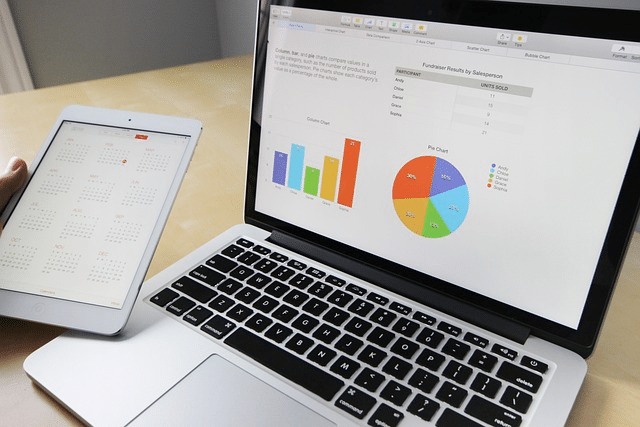
Are you dealing with a large data set? Are you wondering how many rows can Tableau handle efficiently?
Tableau can manage very large datasets, but it doesn’t have a specific maximum row limit. This capability is dependent on factors like hardware specifications, data complexity, data connection, and source type. Tableau can manage datasets in the order of tens of millions to potentially hundreds of millions of rows, although exact numbers will vary depending on the specific circumstances and configuration.
In this article, we’ll delve into the details of Tableau’s capabilities, including how many rows it can handle without slowing things down, and also the impact of data source types.
Let’s get into it!

How Many Rows Can Tableau Handle Based on Connection Type
When working with Tableau, you’ll come across two main types of data sources:
-
Live connections
-
Data extracts

1. Tableau’s Row Handling Capacity With Live Connections
A live connection in Tableau means that the data you are working with is stored in an external data source, such as a database.
When you create visualizations using a live connection, Tableau queries the data source in real-time, which allows you to work with the most up-to-date data available.
Since data is processed in real-time, the number of rows Tableau can handle depends on the data source’s capabilities. Some popular data sources supported for live connections include Amazon Redshift, Google BigQuery, Microsoft SQL Server, and MySQL.
It is important to note that the row limit for live connections is not explicitly set by Tableau but is dependent on the performance and capabilities of the underlying data source.

2.Tableau’s Row Handling Capacity With Data Extracts
A data extract is a snapshot of your data that Tableau stores locally on your machine.
When you create a data extract, Tableau reads the data from the original data source, processes it, and then stores it in a highly optimized format for fast analysis.
Tableau doesn’t set a strict upper limit on the number of rows for data extracts, but it’s generally advised to keep it below 10 million rows for better performance. This recommendation is flexible, not a strict rule. The ability to handle larger datasets depends on the computer’s power and how complex the data is?.
The actual capacity of Tableau to handle data in both live connections and extracts varies greatly based on the environment, hardware specifications, and the complexity of the data and queries.
How Does Data Type Source Affect Tableau’s Row Handling Capacity?
Tableau’s ability to handle a certain number of rows is significantly influenced by the type of data source being used. Different data sources have varying capabilities and limitations, which affect how much data can be efficiently processed and visualized in Tableau.
In this section, we will cover how different data sources affect Tableau’s row-handling capacity.
Specifically, we will go over the following:
-
Databases
-
File-Based Data Sources
-
Web Data Connectors

1) How Do Databases Affect Tableau’s Row Handling Capacity
Databases can be divided into 2 broad groups:
-
High-Performance Databases
-
Traditional Databases
1) High-Performance Databases
High-Performance Databases such as Amazon Redshift, and Google BigQuery are designed for high-speed analytics.
These databases can often handle datasets in the order of hundreds of millions to billions of rows.
2) Traditional Databases
Traditional Databases such as SQL Server, and Oracle might not perform as well with extremely large datasets as high-performance databases.
In tests with Tableau version 8.3, a SQL Server 2012 database with approximately 100 million records was used successfully. This suggests that traditional databases can handle large datasets, potentially in the hundreds of millions of rows range.
2) How Do File-Based Data Sources Affect Tableau’s Row Handling Capacity
File-based data sources have 2 main types:
-
Excel and CSV Files
-
Text Files and JSON

1) Excel and CSV Files
These data sources are generally less efficient for large datasets. Excel has a row limit of 1,048,576, which Tableau inherits when connecting to Excel data sources.
Performance may degrade with datasets approaching this limit.
2) Text Files and JSON
While these files don’t have strict row limits, performance can degrade with very large files, impacting how well Tableau can handle the data.
3) How do Web Data Connectors Affect Tableau’s Row Handling Capacity
When Tableau connects to web services, such as social media platforms, the amount of data it can fetch is often limited by the rules of those services’ APIs.
These rules can restrict how much data Tableau can pull from these sources, which means the number of rows Tableau can work with from these connections might be less than expected.
For instance, Google Sheets can store data of up to 5 million cells. If your data uses many columns, you may reach the 5 million cell limit with fewer rows which ultimately reduces the number of rows Tableau can process. The column limits the number of rows Tableau can handle.

Learn how you can supercharge your analytics journey with EnterpriseDNA by watching the following video:
Final Thoughts
Understanding how many rows Tableau can comfortably handle is essential for any data analyst. It allows you to plan and execute your data visualization projects more effectively.
With this knowledge, you can make better decisions about data management and ensure that your visualizations are both accurate and efficient.
Tableau stands out not just for its ability to process millions of rows of data, but also for how it turns these vast datasets into insightful, understandable visualizations.
Happy Data Visualizations!
Frequently Asked Questions
In this section, you will find some frequently asked questions you may have regarding the number of rows Tableau can handle.

What is the maximum number of rows in a Tableau data extract?
Tableau does not have a specified maximum limit for the number of rows in a data extract. The actual limit is influenced by various physical and theoretical limits, such as the system’s hardware resources, the disk space available, and the complexity of the data?
How do we increase the number of rows in Tableau?
To increase the number of rows in a Tableau data extract, you should optimize the extract’s performance by simplifying calculations, reducing the number of fields, and using extract filters in an extract file to include only necessary data.
Additionally, upgrading hardware resources like RAM and CPU on the machine running Tableau can also help manage larger datasets more effectively.
How does Tableau handle large datasets?
Tableau Desktop handles large datasets by using powerful data engine optimization techniques such as data extracts, which are pre-processed and optimized for fast querying.
Additionally, Tableau employs in-memory computing, enabling efficient data analysis and visualization even with a very large data set.
What is the maximum number of records Tableau can handle with an Access database?
The maximum number of data values Tableau server can handle when connected to an Access database is not explicitly defined by Tableau.
Instead, it depends on various factors such as the performance of the Access database, the complexity of the data, and the hardware resources of the system running Tableau.
Generally, for optimal performance, it’s advisable to work with datasets that are within the handling capacity of the Access database itself, which is typically suitable for small to medium-sized datasets?

Be the first to comment